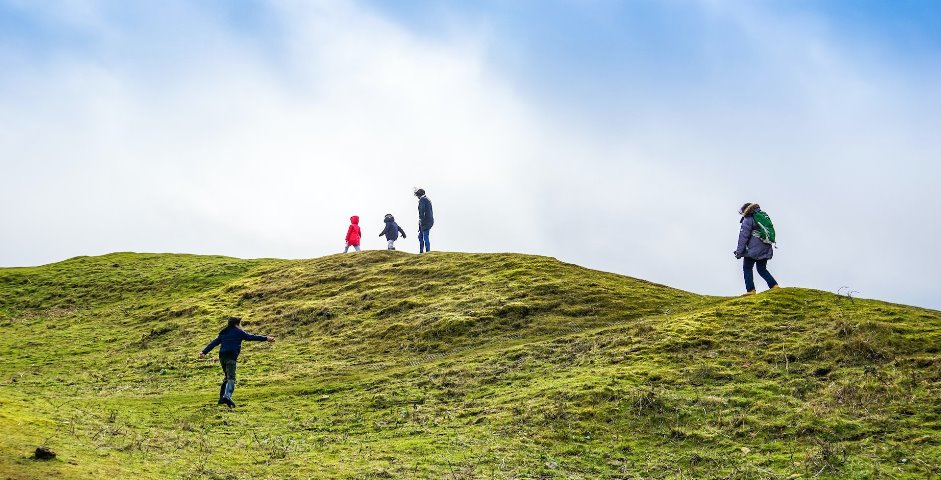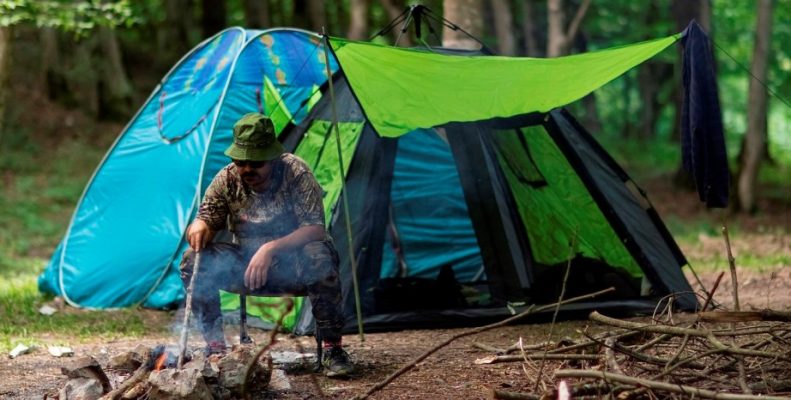Walking in the great outdoors can be a refreshing experience, but it also comes with its own set of challenges.

To make the most of your time in nature and ensure you stay healthy, there are specific considerations to keep in mind.
These range from your choice of clothing to common outdoor injuries and adventurous activities like canyoning.
Insulated Jackets: Your First Line Of Defense
Your choice of clothing can be a significant factor in ensuring your well-being during an extended outdoor walk.
A reliable insulated jacket is an essential piece of gear that can keep you warm in cold weather and protect you from the elements.
Insulation acts as a buffer between your body and the external environment, maintaining an optimum temperature and reducing the risk of hypothermia.
Investing in a high-quality jacket can make all the difference in how comfortable and enjoyable your outdoor walks turn out to be.
Best Insulated Jackets By Outdoorcrunch
When it comes to choosing an insulated jacket, one brand that stands out is OutdoorCrunch.
The best insulated jackets by OutdoorCrunch are engineered with outdoor adventurers in mind, incorporating lightweight, breathable, and highly insulative materials.
The jackets often feature both down and synthetic insulation, offering a balance of warmth, weight, and water-resistance.
These attributes are vital in changeable weather conditions where you need reliability.
Not only do they provide excellent protection, but they also come in a variety of styles and colors, ensuring you don’t have to compromise on aesthetics for functionality.
The Importance Of Layering
While a good insulated jacket is critical, it’s just as crucial to understand the concept of layering when dressing for an extended outdoor walk.
The three-layer system, consisting of a moisture-wicking base layer, an insulating middle layer, and a waterproof or water-resistant outer layer, can offer comprehensive protection against varying weather conditions.
Each layer has its unique purpose, and together, they work in harmony to keep you comfortable and safe.
Durability And Care
A high-quality insulated jacket is an investment, and like all investments, it requires care. Frequent usage and exposure to the elements can lead to wear and tear.
Therefore, proper storage and regular maintenance, such as spot cleaning and occasional washing according to manufacturer guidelines, can go a long way in prolonging the life of your jacket.
Common Outdoor Injuries: Prevention And Preparedness
Outdoor walking is not without its hazards. Accidents can happen, and the risk of injuries is real, particularly when you’re far from immediate medical help.
Being aware of common outdoor injuries and how to mitigate them can help you take preventative measures and prepare adequately for unforeseen situations.
Sprains And Strains
One of the most common injuries outdoor enthusiasts face is sprains and strains. These usually happen when you slip or trip while walking.
The key to prevention is to always be aware of your surroundings, watch your footing, and walk at a pace that allows you to react quickly to any obstacles.
Dehydration And Heat Exhaustion
When you’re focusing on the journey and the scenery, it’s easy to forget about basic needs like water intake.
Dehydration and heat exhaustion are prevalent issues that can sneak up on you, especially during hot days.
Carrying a refillable water bottle and taking regular sips can help you stay hydrated and reduce the risk significantly.
Cuts And Abrasions
Navigating through rough terrain can expose you to the risk of minor cuts and abrasions.
Carrying a well-stocked first aid kit and knowing basic first aid can be invaluable in treating such injuries and preventing infections.
Canyoning: An Exciting But Risky Adventure
If you’re looking to add a thrill to your outdoor walks, canyoning could be just the activity for you.
However, while canyoning offers an adrenaline-pumping experience, it also comes with its own set of risks, from slippery surfaces to fast-flowing waters.
Essential Gear For Canyoning
The right gear is paramount when going canyoning. Helmets, ropes, and appropriate footwear can make the difference between an exciting adventure and a dangerous ordeal.
Research thoroughly and invest in equipment that meets safety standards for this extreme sport.
Safety Measures
Before embarking on a canyoning adventure, it’s advisable to undergo some form of training, either from experienced canyoners or through a certified course.
Also, never go canyoning alone; always have at least one other person with you who knows the area or has prior experience.
Know The Terrain
Being familiar with the specific canyon you intend to explore is crucial. The challenges in canyoning are highly location-dependent.
Factors like the steepness of the terrain, the flow rate of the water, and the types of rocks present can all have implications for your safety.
Nutrition: Fueling Your Outdoor Adventures
Nutrition is often overlooked but plays a vital role in your overall well-being during extended outdoor walks.
Eating the right types of food can provide the energy you need to sustain your activities and aid in recovery.
Whether it’s choosing the right snacks, staying hydrated, or understanding how nutrition affects your performance, knowing what to consume can significantly impact your outdoor experience.
Optimal Snacks For Energy
During an outdoor walk, your body requires quick sources of energy.
Snacks like trail mix, energy bars, or fruits like bananas and apples offer a good balance of carbohydrates, fats, and proteins.
These foods are easy to pack and can be consumed without much hassle, making them convenient options for quick energy boosts.
Hydration With Electrolytes
Water is essential, but during long, strenuous walks, you also lose electrolytes through sweat.
Consuming a sports drink with electrolytes can help in maintaining the body’s mineral balance, which aids in muscle function and other biological processes.
Some people also carry hydration tablets or sachets that can be mixed with water to replace lost electrolytes.
Timing Your Meals
When you’re planning an extensive walk, the timing of your meals becomes crucial.
Eating a heavy meal just before a long walk can lead to discomfort, while not eating adequately could make you lethargic and affect your performance.
A balanced meal about two hours before setting out and planned snacks throughout your walk can provide consistent energy, helping you enjoy your outdoor adventure to the fullest.
Final Remarks
In conclusion, staying healthy during extensive outdoor walks involves a range of considerations.
From selecting the right clothing to being prepared for common injuries and understanding the risks and rewards of activities like canyoning, being well-informed and prepared can make your outdoor adventures both safe and enjoyable.

















